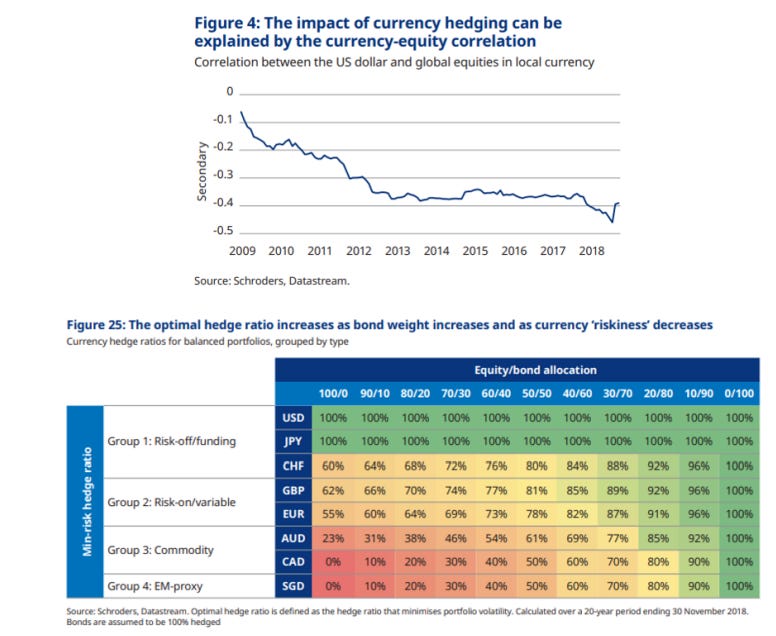Hear, hear: the is going down.
Investors love to attach an ex-post narrative to any price action, and this time the blame was on Trump’s erratic policies, the reduced attractiveness of US assets, and ‘’China dumping’’. Two of these actually make sense (you can easily guess which ones).
But there is a much bigger catalyst for the USD to sell-off more: FX hedging flows from proper ‘’whales’’.
These whales control $30 trillion (!) in USD-denominated assets, of which 13 trillion in equities and the remaining portion in fixed income instruments.
You may know these whales by their common names: GPIF, Norges Fund, CPPIB, APG, SuperAnnuation…
Foreign pension funds, insurance companies and asset managers are the true whales that could dump more US Dollars in an attempt to correct their sizeable and secular ‘’under-hedging’’ of USD risk:
In this article I will try to explain why these FX hedging flows (sell USD) could be triggered, quantify how big these flows could be, and assess which countries and currencies could represent the bulk of it.
The analytical process requires us to identify how big their USD asset pool is (in % of their domestic economy) and how much under-hedged they are.
But first – why do foreign whales actually ‘’under-hedge’’ their USD risk exposure?

Imagine you are the CPPIB – Canada’s biggest pension fund with $500bn+ in AuM.
You have to generate a consistent return of ~6-7% to be able to service your liabilities (future pensions), which means you’ll invest in a portfolio of stocks, bonds, real estate and alternatives.
Your liabilities are in CAD (as you’ll pay pensions to Canadians) but your assets can’t only be CAD-denominated because to satisfy your investment needs you’ll need to look into the US stock markets, $- denominated hedge funds,
Treasuries etc. But by investing in USD-denominated assets, you are also implicitly getting exposure to risk.
So – how much USD risk should you hedge? Or namely, how much USD/CAD should you sell as a hedge?
The study above from Schroeders details the industry-standard approach: the top chart looks at the correlation between USDxxx (e.g. USD/CAD) and your investment asset class (e.g. equities).
Recently, the USD has ‘’always’’ rallied when stocks sold-off as the world scrambled towards the safety of US assets backed by sound policymaking (= USD smile), and therefore being ‘’under-hedged’’ was great.
On top of it, given a currency like CAD (table below) is commodity/risk-on cyclical, during equity sell-offs having an active ‘’long’’ USD/CAD exposure through under-hedging worked even better – and so the suggested USD/CAD FX hedge ratio for a 60/40 portfolio is 40%.
But what happens when the USD does not rally (!) during risk-off environments, exactly as we are witnessing recently?
In that case, being under-hedged (= actively long USD) becomes painful as it compounds negatively alongside equities (and perhaps also bonds) losing value.
And that’s when these foreign whales would be forced to hedge, and kickstart a substantial USD firesale process.
Let’s dig into the data and find out:
A) How big these USD selling flows could be
B) Which currencies would be involved the most and why
***
Disclaimer: This article was originally published on The Macro Compass. Come join this vibrant community of macro investors, asset allocators and hedge funds – check out which subscription tier suits you the most using this link.
